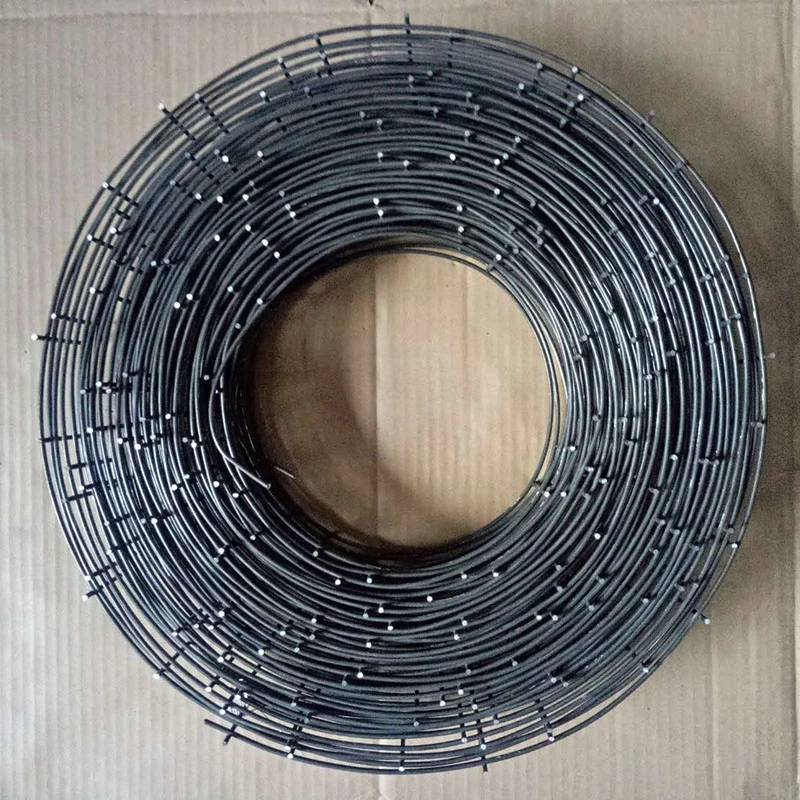-
+86 15030157877
-
sales@galvanizedmetalmesh.com
Th11 . 08, 2024 07:20 Back to list
Metal Wire Mesh Manufacturing Industry Insights and Trends for 2023
Understanding Metal Wire Mesh Factories An Overview
Metal wire mesh has become an essential element in various industries, including construction, agriculture, and manufacturing. The factories that specialize in producing metal wire mesh play a crucial role in meeting the growing demand for diverse applications. In this article, we will explore the significance of metal wire mesh factories, the production process, the types of wire mesh they create, and the future prospects of this industry.
The Importance of Metal Wire Mesh
Metal wire mesh is a versatile material used in a wide range of applications. It consists of interconnected metal wires that form a grid-like pattern, providing structural support while allowing for ventilation, drainage, and visibility. Due to its strength and durability, metal wire mesh is widely utilized in various industries
1. Construction In construction, metal wire mesh is often used as reinforcement in concrete structures, ensuring durability and integrity. It is also used in scaffolding, fencing, and as a barrier to prevent debris from falling during construction work.
2. Agriculture Metal wire mesh is commonly used in agricultural settings for fencing, animal enclosures, and even for creating protective covers for crops. The material's durability ensures that it can withstand harsh weather conditions and protect livestock from predators.
3. Manufacturing Various manufacturing industries utilize metal wire mesh for filtration, separation processes, and as components in machinery. Its ability to withstand high temperatures and corrosive environments makes it an ideal choice for industrial applications.
The Production Process of Metal Wire Mesh
The manufacturing process of metal wire mesh involves several key steps
1. Material Selection The first step in producing wire mesh is the selection of appropriate materials. Typically, steel, aluminum, or stainless steel wires are used, depending on the intended application and required properties.
2. Wire Drawing Once the raw materials are chosen, the wire is drawn through a series of dies to achieve the desired diameter. This process not only shapes the wire but also increases its tensile strength.
3. Weaving or Welding After the wires are prepared, they are either woven or welded together to form the mesh. In the weaving process, vertical and horizontal wires are interlaced to create a grid. Alternatively, in the welding process, wires are electrically fused at intersections, creating a sturdy and stable mesh structure.
metal wire mesh factories

4. Finishing Treatment The final step involves treating the mesh to enhance its properties. This may include galvanization, powder coating, or other methods to improve corrosion resistance and overall durability.
5. Quality Control Before dispatching the finished products, factories conduct rigorous quality control tests to ensure the wire mesh meets industry standards and customer specifications.
Different Types of Metal Wire Mesh
Metal wire mesh factories produce a variety of mesh types, each designed for specific applications
1. Welded Wire Mesh Known for its strength and stability, this type of mesh is commonly used in construction and industrial applications.
2. Woven Wire Mesh With its flexibility and lightweight nature, woven wire mesh is often seen in architectural applications and as insect screens.
3. Expanded Metal Mesh Created by cutting and stretching metal sheets, this mesh type offers increased strength and is often used for safety barriers and filters.
4. Perforated Metal Sheets These sheets feature holes punched into them and are utilized for a range of purposes, including ventilation and aesthetic applications.
Future Prospects of Metal Wire Mesh Factories
As industries evolve, the demand for metal wire mesh is expected to grow. Innovations in manufacturing techniques and materials will likely lead to the development of specialized products that cater to niche markets. Additionally, the push for sustainable practices may see factories adopting eco-friendly production methods and materials.
In conclusion, metal wire mesh factories serve as vital contributors to numerous sectors, providing essential materials that enhance safety, durability, and functionality. As the industry continues to expand and adapt to emerging trends, the importance of these factories will only increase, promising a solid foundation for future innovations in materials science and engineering. With advancements in technology and sustainable practices on the rise, the future looks bright for the metal wire mesh industry.
-
Welded Gabion Solutions: Durable & AI-Enhanced Designs
NewsAug.01,2025
-
Premium Welded Gabion Mesh | Robust & Eco-Friendly
NewsJul.31,2025
-
Premium Eco-Friendly Roof Tiles | Affordable & Durable
NewsJul.31,2025
-
Premium Roof Tiles for Durable & Stylish Roofing Solutions
NewsJul.30,2025
-
High-Quality Roof Tiles for Durable & Stylish Roofing Solutions
NewsJul.29,2025
-
High Quality Square Wire Mesh Manufacturer & Supplier for Wholesale
NewsJul.29,2025



